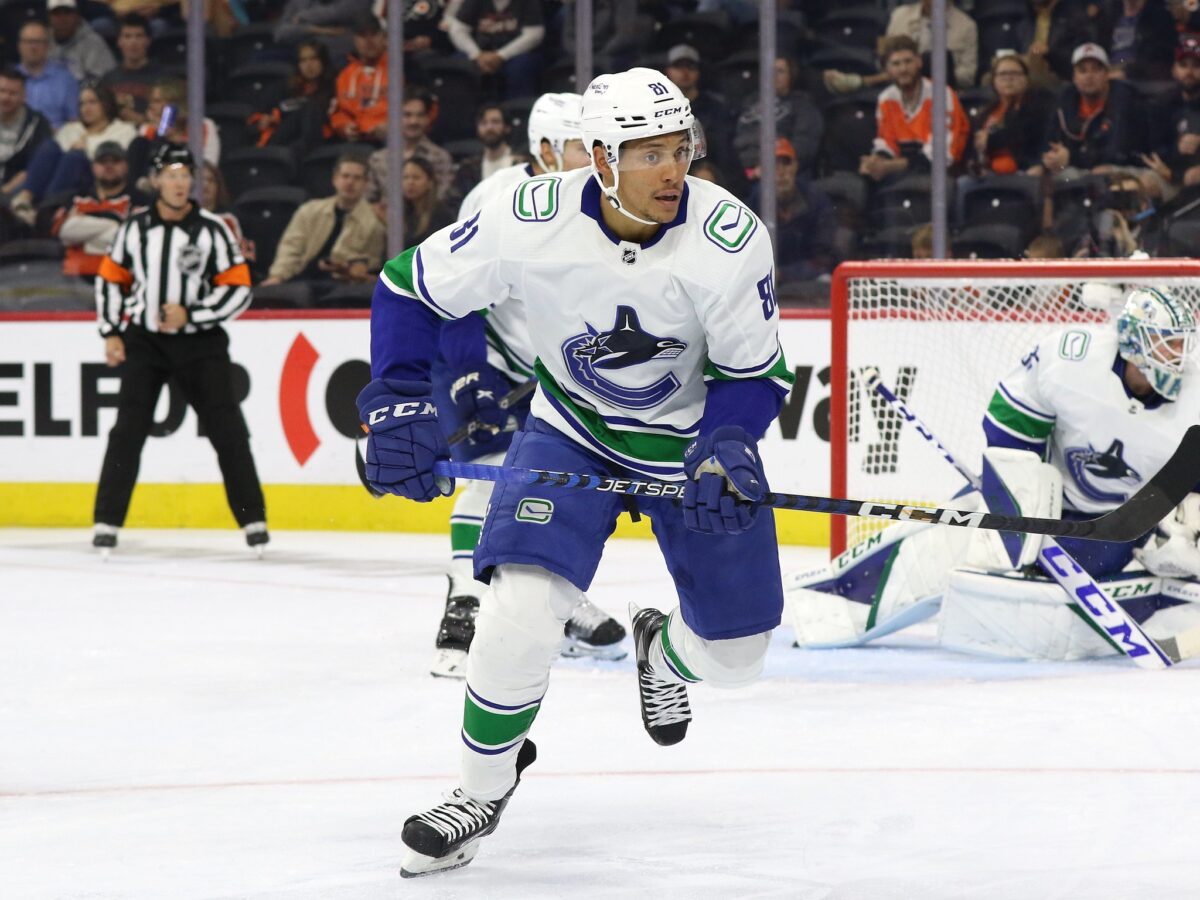The Vancouver Canucks went “scorched-earth” on the Edmonton Oilers on Wednesday night, Oct. 11, winning their season opener 8-1. There are a multitude of storylines to pull from this contest, including Brock Boeser’s four-goal night, J.T. Miller and Elias Pettersson doing J.T. Miller and Elias Pettersson things and even Thatcher Demko vomiting in his helmet…? However, what hasn’t been talked about enough is the revamped bottom-six and how potent they were against the Oilers.

Canucks general manager (GM) Patrik Allvin and president of hockey operations Jim Rutherford addressed the forward depth this summer, bringing in Pius Suter and Teddy Blueger via free agency while trading for Sam Lafferty right before the season began. Anthony Beauvillier, Dakota Joshua and Nils Hoglander also spent parts of last season in Vancouver, providing solid minutes in third and fourth-line roles. For the first time in a while, Vancouver seems to have solid depth, and that showed on Wednesday night.
Analysis of the Bottom-Six’s Performance
With injuries to Ilya Mikheyev and Blueger, Canucks head coach Rick Tocchet rolled out 11 forwards against Edmonton, which is less than ideal when facing the league’s best duo in Connor McDavid and Leon Draisaitl. The third line was made up of Beauvillier-Suter-Joshua, while Hoglander and Lafferty rotated in and out of other lines. The third line performed well, having the second-highest expected goals for (xGF) among all Canucks lines at 0.31. In 2:58 of ice time together, the makeshift line of Hoglander-Lafferty-Joshua had a whopping 90.40 expected goals for percentage (xGF%), providing a blend of speed, skill, and toughness, which led to the Canucks’ eighth goal.
Impact on Canucks’ Ceiling
Obviously, it is one game. But shutting down the best player in hockey with relative ease should give the team a lot to be confident about. Heading into the season, the bottom-six was arguably the Canucks’ biggest question mark given all the new additions. However, their performance against Edmonton shows just how valuable they can be, both at 5-on-5 and on the penalty kill.

The Oilers’ potent power play went just 1-for-4 against Vancouver’s penalty kill. Last season, the Canucks finished dead last in killing penalties. In 2021-22, they finished third-last. With the additions of veteran penalty killers like Suter, Lafferty and even blueliner Ian Cole, the old penalty kill woes look to have been put to bed.
Related: Canucks News & Rumors: Garland, Mikheyev, Pettersson & More
It is too early to make presumptions about how far the team can go. Even Tocchet knows that, as he had this to say postgame: “Listen, it’s one game. Obviously, everything went in our favour, and I’m proud of the guys. But this is a long haul. I said, ‘We’re not ordering rings around here.’ It’s one game. We can feel good about it, but we’ve got to come back to Earth tomorrow.” Even though what he said is true, if the bottom-six can perform at a level close to this consistently (especially with Blueger’s return), the postseason feels like a realistic destination for the Canucks.
